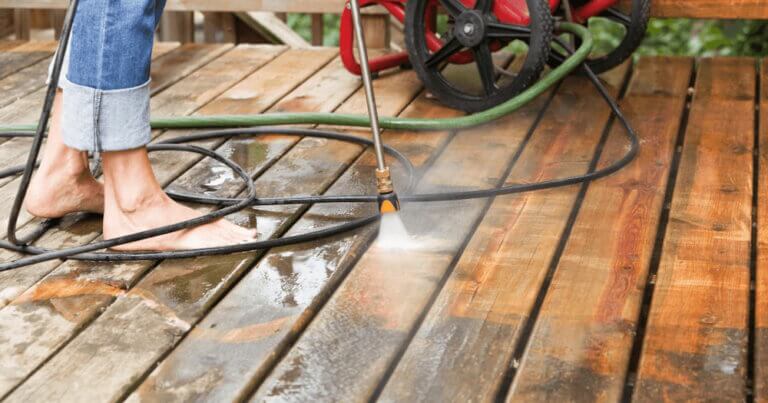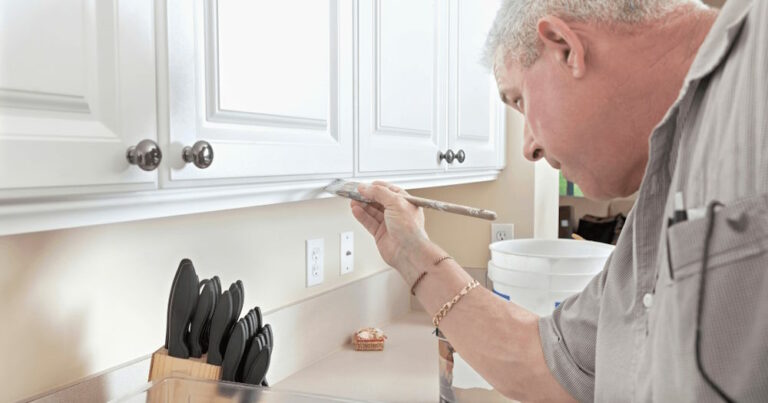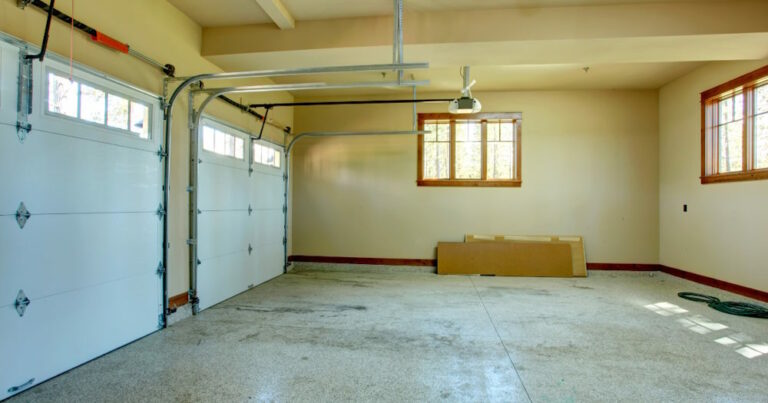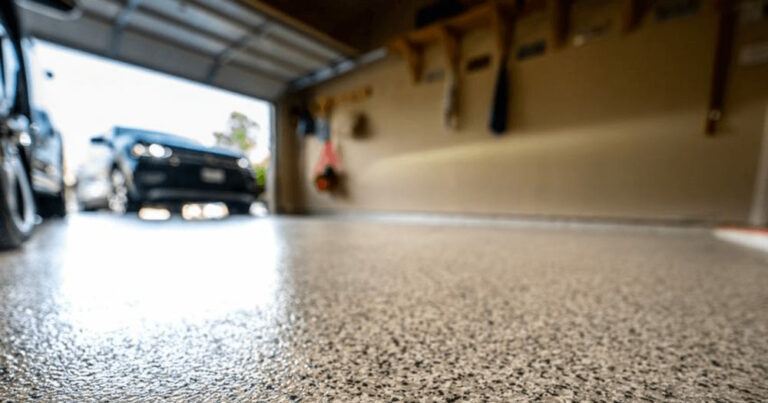Basement Epoxy Floor: A Beginner’s Guide
If you’re looking for an affordable and stylish way to upgrade your basement, a basement epoxy floor might be just what you need. Not only does it add durability, but it can also protect your basement from moisture and other types of damage. Installing a basement epoxy floor might seem like a daunting task, but with the right preparation and guidance, you can have a beautiful and functional space in no time.
Key Takeaways:
- Basement epoxy floors offer durability and resistance to moisture.
- Proper preparation is key for a successful installation.
- Choosing the right epoxy system is crucial.
- The application process involves mixing and even coating techniques.
- Maintaining your basement epoxy floor is essential for its longevity and beauty.
Understanding Epoxy Flooring
Epoxy flooring is a durable, long-lasting floor coating that is made up of two main components: resin and hardener. When combined, they undergo a chemical reaction that creates a strong, rigid material that is resistant to wear and tear and can withstand heavy foot traffic and machinery. Epoxy flooring is a popular choice for basements due to its strength, resilience, and easy maintenance.
Epoxy flooring can be customized to fit a variety of styles and preferences. By adding decorative flakes, color, or unique finishes, you can create a basement floor that enhances the overall look of your living space.
One of the key benefits of epoxy flooring is its moisture resistance. Basements can often be damp and prone to moisture, but epoxy flooring can help prevent water from seeping into the concrete and causing damage. It is also resistant to stains, making it easy to clean and maintain.
In addition to basements, epoxy flooring is commonly used in commercial and industrial settings due to its strength and durability. It is also frequently used in garage floors as it can resist chemicals, oils, and greases.
Key Points
- Epoxy flooring is made up of resin and hardener.
- It is strong and resistant to wear and tear.
- Epoxy flooring is customizable to fit different styles and preferences.
- It is moisture-resistant and stain-resistant.
- Epoxy flooring is commonly used in commercial and industrial settings, as well as in garages.
Benefits of Basement Epoxy Floors
Basement epoxy floors come with a host of benefits that make them a popular choice for homeowners looking to renovate their basement. Here are some of the benefits of basement epoxy floors:
| Benefits | Description |
|---|---|
| Durability | Basement epoxy floors are highly durable and can withstand wear and tear from heavy foot traffic, furniture, and equipment. |
| Moisture Resistance | Epoxy floors are resistant to moisture, making them ideal for basements that are susceptible to dampness and humidity. They also prevent mold and mildew growth. |
| Easy Maintenance | Basement epoxy floors are easy to clean and maintain. They require minimal upkeep and can be easily maintained with regular sweeping and mopping. |
| Aesthetic Customization | Epoxy floors come in a variety of colors and patterns, allowing you to customize your basement floor to match your specific design preferences. |
Epoxy floors are also seamless and provide a smooth, even surface, making them ideal for basements that serve as play areas, home gyms, or living spaces. They are also resistant to stains from spills and chemicals, making them a practical choice for homeowners.
In summary, the benefits of basement epoxy floors include durability, moisture resistance, easy maintenance, and aesthetic customization. These benefits make basement epoxy floors an attractive option for homeowners looking to upgrade their basement.
Preparing for Installation
If you want your basement epoxy floor installation to go smoothly and successfully, proper preparation is crucial. Here are the steps you need to follow:
Assess the Condition of Your Basement Floor
Before starting any installation work, examine your basement floor to determine any issues like cracks, uneven surfaces, or moisture problems.
If you find any problems, address them before proceeding. For instance, patch up cracks, level uneven surfaces, or fix any moisture issues. This is essential to ensure that your basement epoxy floor coating will adhere well and last longer.
Clean and Repair Existing Damage
Thorough cleaning is a crucial part of preparing your basement floor for an epoxy coating installation. The floor surface must be free of dirt, dust, oils, and any other residue. Clean the surface with a degreaser or a power washer. Let the floor dry completely before proceeding.
If the floor has any holes, chips, or cracks, correct these problems before applying the epoxy coating. Use a suitable filler for the area, level it out with a scraper, and allow it to dry completely.
Protect Walls and Objects in the Basement
While applying the epoxy coating, it is imperative you protect your walls and any other fixed walls or objects from exposure to the coating. Cover up any outlets, vents, and light switches with painter’s tape. Also, ensure to place a protective cover over any objects stationed on the floor.
By properly preparing your basement floor for epoxy flooring, you’ll create a strong foundation for the installation process. Follow these steps carefully, and you’ll soon be on your way to having a beautiful, durable basement epoxy floor.
Choosing the Right Epoxy System
Choosing the right epoxy system is essential to achieving the desired look and performance for your basement floor. There are various factors to consider when making your decision, including the intended use of your basement space and the overall aesthetic you want to achieve.
One of the most important considerations is the type of epoxy system you will choose. There are several options available, including:
Solvent-Based Epoxy
Solvent-based epoxy is a traditional type of epoxy that contains volatile organic compounds (VOCs). This type of epoxy is highly durable and has a long lifespan. It’s also one of the more affordable options available. However, it does emit strong fumes during installation, so proper ventilation is necessary.
Water-Based Epoxy
Water-based epoxy is a newer type of epoxy that has lower VOC content. It also has a faster curing time compared to solvent-based epoxy. However, it tends to be less durable and not as resistant to chemicals and stains.
100% Solids Epoxy
100% solids epoxy is the most durable option available. It has no VOCs and is highly resistant to chemicals and stains. However, it is the most expensive type of epoxy and has a longer curing time compared to other options.
Aside from the type of epoxy system, you should also consider the color and finish of your epoxy floor coating. Epoxy coatings come in a range of colors and finishes, including metallic, glossy, and matte. It’s essential to choose a color and finish that complements your basement’s overall design scheme.
Ultimately, the best way to choose the right epoxy system is to consider your specific needs and preferences, along with the advice of a professional epoxy flooring contractor.
Applying Epoxy Floor Coating
Now that the preparation is complete, it’s time to start applying the epoxy floor coating. The process can be broken down into four simple steps:
- Mixing the epoxy: Following the instructions on the packaging, begin mixing the two-part epoxy together.
- Applying the base coat: Start by applying the base coat to the floor in small sections. Be sure to spread the epoxy evenly using a roller and make sure it penetrates all areas of the floor. Allow this coat to dry according to instructions before continuing.
- Applying the topcoat: Apply the topcoat in the same manner as the base coat, ensuring even coverage and careful attention to details. This coat will provide a critical layer of protection and durability for your basement floor.
- Add non-skid additives: If adding non-skid additives, sprinkle them evenly into the wet epoxy before it dries.
It’s important to note that applying the epoxy floor coating correctly will give you the best results. It’s recommended that a professional contractor is hired to apply the coating if you’re not confident in your ability to apply it yourself.
“Ensuring the even application of epoxy throughout the basement is essential for both appearance and functionality of this coating.” – Mike Smith, flooring expert at XYZ Flooring
Here are a few tips to help achieve professional results:
- Start with a clean and dry floor free of dust and debris.
- Ensure a consistent temperature range around 70℉ with low humidity for the duration of the application process.
- Work in small sections, applying and spreading the epoxy systematically.
- Avoiding over-rolling which can potentially create bubbles or pulling up dried epoxy parts.
- Protect yourself from the fumes by wearing protective equipment.
By following these steps and recommendations, you’ll be well on your way to achieving a beautiful and long-lasting basement epoxy floor.
Curing and Drying Time
Once the epoxy floor coating has been applied, it is important to allow it to cure and dry properly. The curing process is when the epoxy hardens and chemically bonds to the surface, creating a durable and resilient coating. The drying time refers to the amount of time needed for the epoxy to fully dry and be ready for use.
The curing and drying time for basement epoxy floors can vary depending on factors such as humidity, temperature, and the type of epoxy system used. Typically, epoxy floor curing can take anywhere from 24 to 48 hours. However, it is best to allow at least 72 hours for the epoxy to fully cure before walking on it or placing any heavy objects on the surface.
The drying time for epoxy floors can range from 12 to 24 hours. During this time, it is important to avoid any moisture or debris from coming into contact with the surface, as this can compromise the final result.
In addition to allowing sufficient curing and drying time, it is recommended to avoid exposing the basement epoxy floor to heavy traffic or harsh chemicals for at least seven days after installation. This will give the epoxy ample time to fully cure and provide maximum protection against wear and tear.
Maintaining Your Basement Epoxy Floor
Congratulations on your beautiful new basement epoxy floor! To ensure its longevity and beauty, it’s important to implement a regular maintenance routine. Here are some essential tips and practices for maintaining your epoxy floor:
- Sweep or dust mop the surface daily to remove dirt and debris that can scratch the surface
- Use a wet mop or auto scrubber weekly to clean the surface with a gentle cleaning solution designed for epoxy floors
- Wipe up spills and stains as soon as possible to prevent them from staining the surface
- Avoid using harsh chemicals or abrasive cleaning tools that can damage the surface
- Place protective pads under furniture legs and use floor mats at entryways to prevent scratches and abrasions
- Periodically inspect the surface for any signs of wear and tear or damage, such as cracking or bubbling, and address them promptly to avoid further damage
By following these tips and practices, you can ensure that your basement epoxy floor remains in excellent condition for years to come.
Enhancing Your Basement Epoxy Floor
While basement epoxy floors already offer durability and ease of maintenance, they can also be visually stunning. Here are a few ideas to help enhance the look of your basement epoxy floor and make your space even more inviting:
Incorporate Decorative Flakes
Decorative flakes can add texture and character to your basement epoxy floor. They come in various colors and sizes, giving you the flexibility to create a unique design that complements your space. Consider combining different colors and sizes for a more dynamic look.
Add Stenciled Patterns
Stenciled patterns allow you to create custom designs and borders on your basement epoxy floor. From geometric shapes to abstract designs, the possibilities are endless. You can also mix and match stenciled patterns with decorative flakes for a personalized touch.
Opt for Colorful Epoxy Coatings
While traditional epoxy coatings come in neutral shades, colored epoxy coatings can add a pop of color to your basement floor. You can choose a color that matches your existing decor or opt for a bold hue that adds contrast to your space.
| Pros | Cons |
|---|---|
| Customizable design options | May be more expensive |
| Can add color and texture to your space | Requires additional preparation and work |
| Can complement existing decor | May require more maintenance |
Integrate Unique Finishes
If you’re interested in a more unconventional look, consider incorporating unique finishes to your basement epoxy floor. Some options include metallic coatings, glow-in-the-dark coatings, and even 3D effects. These finishes can add a bold and modern touch to your space.
With these ideas, you can create a basement epoxy floor that is not only functional but also adds character to your space.
Conclusion
Transforming your basement into a functional and stylish space can be a daunting task, but a basement epoxy floor can make a significant difference. With superior durability, resistance to moisture, and customizable aesthetics, an epoxy floor is an excellent choice for your basement.
By following the steps outlined in this beginner’s guide, you’ll be able to install, care for, and enjoy the benefits of a basement epoxy floor for years to come. Remember to choose the right epoxy system, prepare your floor adequately, and allow enough curing and drying time.
Don’t forget to maintain your basement epoxy floor, so it stays looking its best. From regular cleaning routines to addressing common issues, we’ve got you covered.
With the ideas and options for enhancing your basement epoxy floor, you can make it a reflection of your unique style and personality. Add some decorative flakes or patterns, incorporate color, or choose a unique finish to make it your own.
Thank you for reading our guide to basement epoxy floors. We hope it has been informative and helpful. Start your journey to a durable, stylish, and easy-to-maintain basement today!
FAQ
What is basement epoxy floor?
Basement epoxy floor is a type of flooring solution that involves applying a layer of epoxy coating onto the concrete basement floor. This coating creates a durable, seamless, and glossy surface that not only enhances the appearance of the basement but also provides added protection against moisture and wear.
Why should I choose basement epoxy flooring?
There are several advantages to choosing basement epoxy flooring. Firstly, it offers excellent durability, making it resistant to heavy foot traffic, impacts, and stains. Additionally, epoxy flooring is highly moisture-resistant, which is particularly important for basements prone to dampness. It also requires minimal maintenance and is easy to clean, making it a practical choice for busy households. Lastly, epoxy flooring can be customized to your desired aesthetic, with a variety of finishes, colors, and patterns available.
How long does it take to install a basement epoxy floor?
The installation time for a basement epoxy floor can vary depending on factors such as the size of the space, the condition of the existing floor, and the specific epoxy system being used. However, on average, the installation process can take between 2 and 5 days. This timeframe includes the necessary steps of surface preparation, applying the epoxy coating, and allowing sufficient time for curing and drying.
Can I install a basement epoxy floor myself?
While it is possible to install a basement epoxy floor yourself, it is recommended to hire a professional for the best results. Epoxy floor installation requires careful surface preparation, precise application techniques, and knowledge of specific curing and drying processes. Professional installers have the expertise and experience to ensure that the epoxy coating is applied correctly, providing a long-lasting and flawless finish.
How do I maintain a basement epoxy floor?
Maintaining a basement epoxy floor is relatively simple. Regular cleaning with a soft-bristle broom or mop and a mild, non-abrasive cleaner is usually sufficient to keep the surface clean. It is important to avoid using harsh chemicals or abrasive cleaning tools as these can damage the epoxy coating. Additionally, placing furniture pads or protective mats under heavy objects can help prevent scratches or dents. Finally, it is recommended to periodically reapply a topcoat or sealer to maintain the protective layer and prolong the lifespan of the epoxy floor.
Can I install a basement epoxy floor over existing flooring?
In most cases, it is possible to install a basement epoxy floor over existing flooring, such as concrete or tile. However, it is essential to assess the condition of the existing floor and ensure it is structurally sound and free from any significant damage. Proper surface preparation, including cleaning and repairing any cracks or imperfections, is crucial to ensure the epoxy coating adheres properly and provides a durable finish. It is recommended to consult with a professional installer or manufacturer for specific guidance based on your unique situation.





